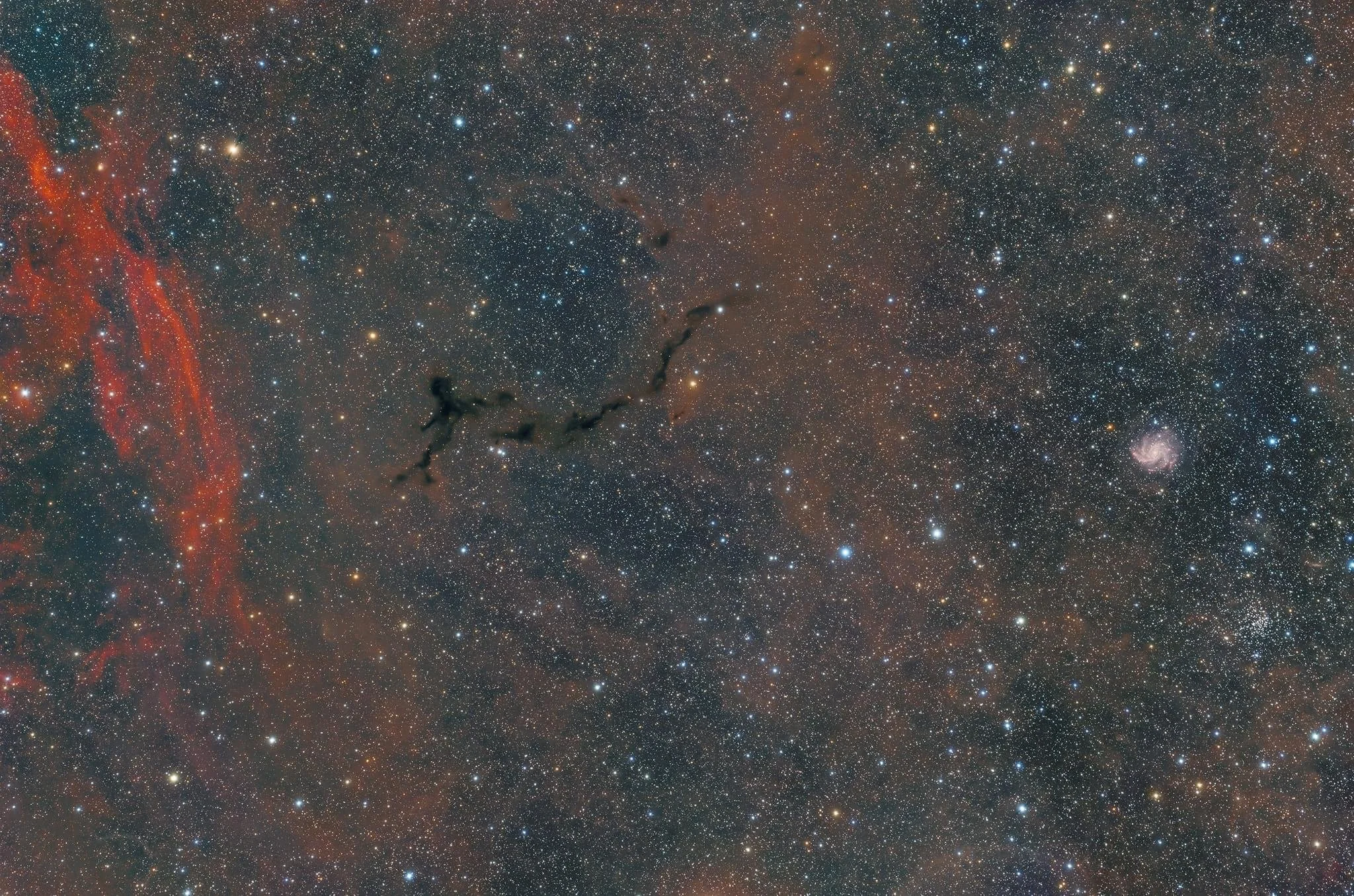
AAPOD2 Image Archives
Barnard 150
Image details:
This is Barnard 150 is a dark nebula visible in the constellation Cepheus. It is also known as the Hippocampus Nebula due to its shape.
Also in this image is Galaxy NGC 6946, nicknamed the Firework Galaxy, is a spiral galaxy seen almost face-on. Straddling the Cygnus and Cepheus constellations, as well as the NGC693 cluster.
Details:
Takahashi fsq-85-EDX
ZWO ASI2400MC-PRO camera
ZWO ASI290mm guide cam
Ioptron CEM70 mount
ZWO Asiair pro
IDAS NBZ Filters
Pixinsight - astro pixel processor - photoshop
Integration: 15h35
Copyright: Christophe Vergnes
Sh2-129 / OU4 / Barnard 150
Image Description and Details :
This image has been made from 343 hours of exposure through broadband (LRGB) and narrowband (H-alpha & OIII) filters, composed as an 8-panel mosaic. The result covers an area of approximately 3.50° x 5.10° at 2.09 arc''/pixel resolution. Placed on the surroundings of the constellation Cepheus, this area is rich in several DSOs: We can see Sh2-129, also known as the Flying Bat Nebula, a large and faint HII region showed here in its characteristic H-alpha deep red line.
Superposed to Sh2-129 we see the even fainter Ou4 nebula, colloquially the Giant Squid Nebula, discovered in 2011 by Nicolas Outters, a French amateur astronomer. At first identified as a planetary nebula emitting in the OIII blue-green doublet, it would be in fact the largest in apparent size yet identified, extending over one degree (Acker et al. 2012 - arXiv:1206.2477). However, Corradi et al. (2014 - arXiv:1407.4617) describe Ou4 as the result of a bipolar outflow emanating from a massive component of HR 8119, a triple system located 2,300 light-years away, thus about as far as Sh2-129. If confirmed, this would make it a truly perplexing object.
On the right side of this image appears Barnard 150, or Seahorse Nebula, a dark nebula distant 1,500 light-years, composed by three dense star forming cores, part of an elongated molecular cloud complex. Finally, close to the lower-left end we have identified HD 203025, a Be type star surrounded by a diffuse red nebulosity, captured here through the H-alpha filter. It was catalogued according to its colour and morphology as an IR centred nebula by Bodensteiner et al. (2018 - arXiv:1806.01294), resulting from a massive star member of an interacting binary system.
Technical data:
Telescope: Takahashi FSQ106 ED 530mm f/5
CCDs: QSI683 wsg8
Filters: Baader Planetarium -LRGB Ha OIII
Mount: 10Micron GM1000 HPS
Imaging Software: Voyager
Processing Software: Astropixel, Adobe PS, PixInsight
Imaging Data:
8-panel mosaic captured through July 2021 to December 2021
RGB: 170 x 600” (each). Total 84 hours.
Luminance: 280 x 900”. Total 70 hours.
Ha: 316 x 1200”. Total 106 hours.
OIII: 165 x 1800”. Total 83 hours.
Total Project : 343 hours
Copyright: Remote Observatory "FarLightTeam"
Team: José Esteban, Jesús M. Vargas, Bittor Zabalegui, Marc Valero.
Barnard 150 - The Seahorse nebula
Image Description and Details : This dark nebula lies at a distance of 1200 light-years from Earth in the Constellation of Cepheus. Because the nebula is in the Milky Way's plane it stand outs from the background filled with colourful stars of our galaxy, a keen eye can also distinguish three separate dense dust cores that actually are star formation regions.
Taken from my self-made remote observatory in eastern Finland with SkyWatcher Esprit 100mm f/5.5, ZWO ASI1600MM-C, Losmandy G11 guided with ASI224MC as finder-guider, TS Optics LRGB filters.
L: 262x120s, R: 92x120s, G: 100x120s, B: 80x120s.
Total integration time is ~18 hours.
Copyright: © Ville Miettinen




